Genuine Muramasa blade and Muromachi katana on display at Tokyo’s Touken Ranbu store【Photos】
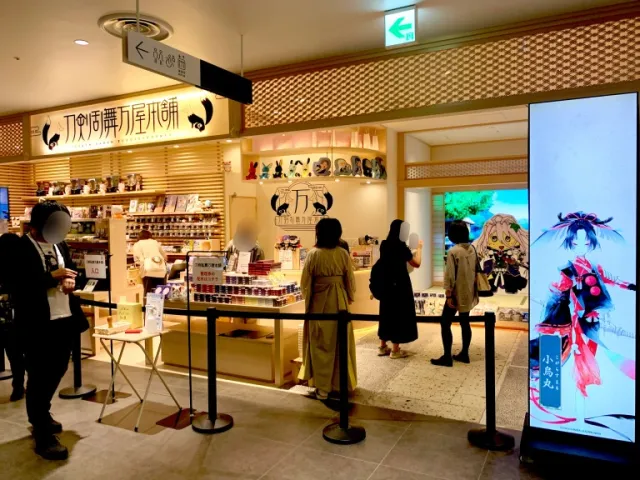
The game/anime franchise about anthropomorphized Japanese swords is offering a chance to see some real ones.
You can find all sorts of plushies, pins, and other trinkets at Touken Ranbu Yorozuyahonpo, the specialty shop dedicated to video game/anime franchise Touken Ranbu. But since Touken Ranbu is a series about historical samurai swords getting reincarnated as handsome men, sometimes the store has actual historical samurai swords.
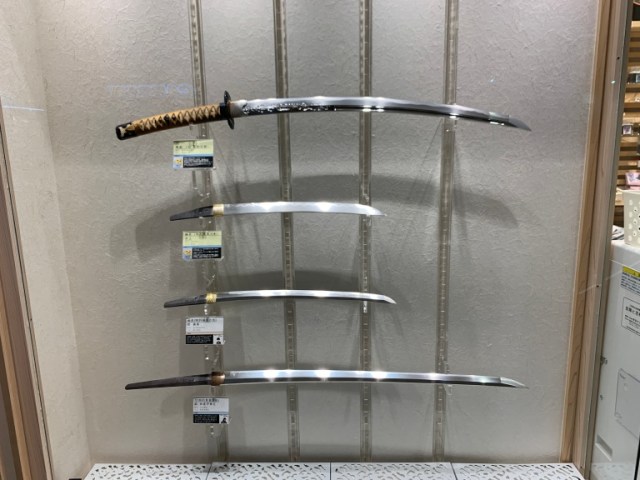
No, they’re not for sale, but they are on display for visitors to admire, and so we recently made our way to the Touken Ranbu Yorozuyahonpo inside Tokyo’s Shibuya Parco complex to see two very special new arrivals for ourselves.
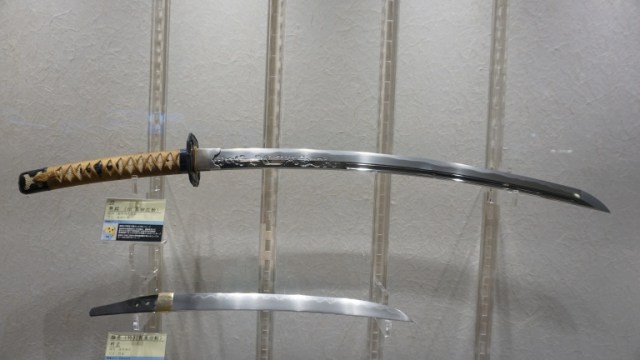
Good things often come in small packages, and sometimes that goes for swords too. So while the katana on top is the flashier weapon, let’s start with the wakizashi short sword underneath it, because it’s a Muramasa sword.
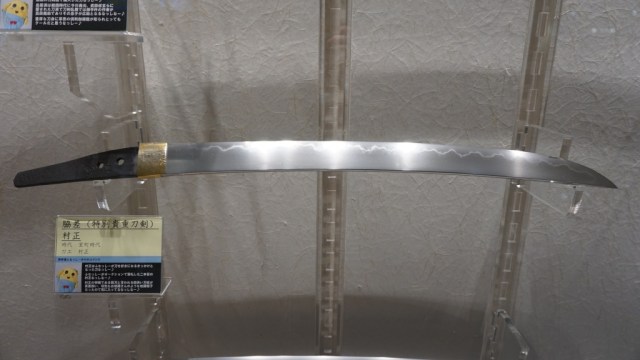
Muramasa was actually the name of a line of swordsmiths who produced some of the finest swords Japan has ever seen (and also among the most feared, as some developed reputations as “cursed demon swords”). This particular wakizashi was forged by the second-generation Muramasa, considered the most skillful of the six successors, and was made in the late Muromachi period (which ended in 1573).
It’s common for Japanese swordsmiths to “sign” their work by engraving their name into the hilt, and sure enough, you can see “Muramasa” (村正) here.
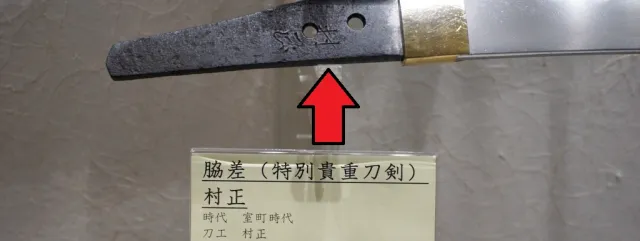
Speaking of the hilt, the ones on Muramasa swords have a unique shape that’s come to be called “tanagobara,” or “fish belly,” because their rounded taper resembles a plump fish.
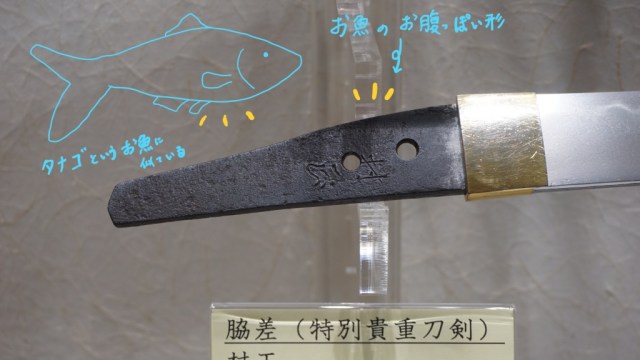
Japanese swords are very much works of art, and nowhere is that more apparent than in the hamon, or tempering line.
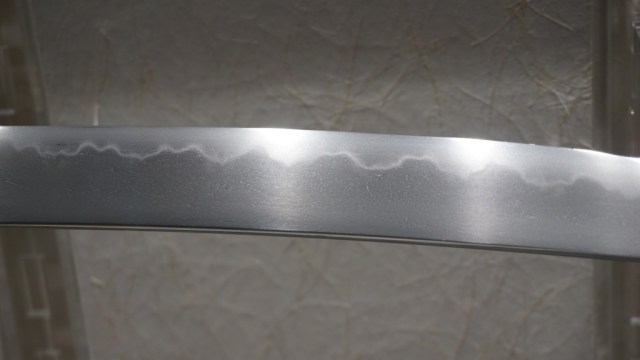
Appraisers and scholars refer to the section between the line as the edge as the ha, or while the area between the line and the sword’s unsharpened inner curve is the jigane.
▼ The ha (刃) has a lighter color than the jigane (地鉄).
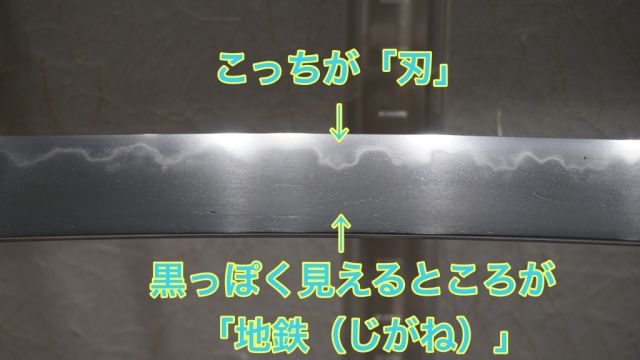
Many Muramasa swords have a blocky, repeating pattern to their hamon, referred to as hakoba (“box edge”), which can be clearly seen on this wakizashi.
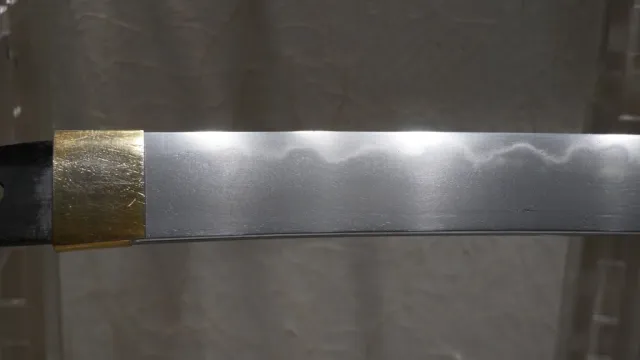
The sword also has what’s called a jizoboshi pattern near its tip, which resembles the shape of the protective Buddha statues (jizo) seen at temples and along roadsides in Japan, often outfitted with a round cloth cap (boshi).
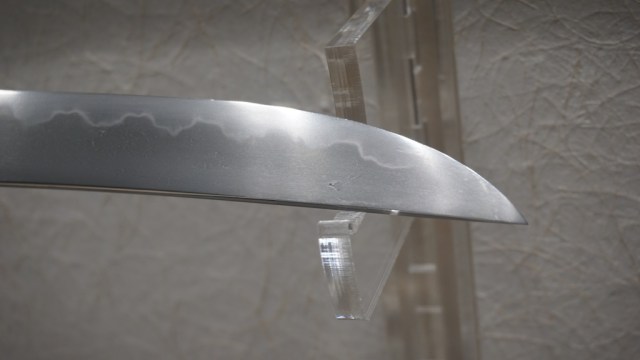
▼ The hamon (刃文) curving into the jizoboshi (地蔵帽子)
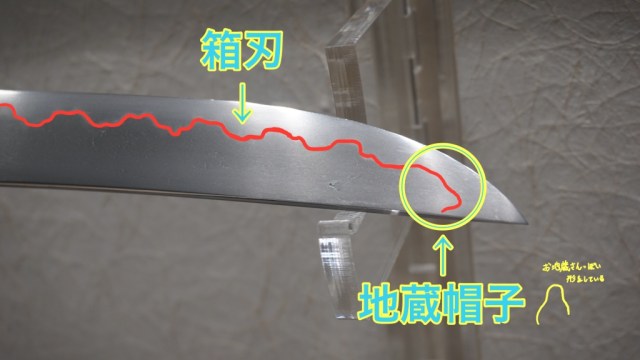
With that, let’s lift our gaze up to the grandiose katana hanging above the Muramasa wakizashi.
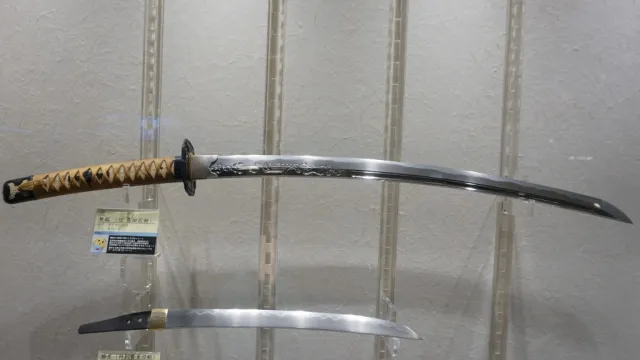
In contrast to the Muramasa, this is a mumei, or “uninscripted” sword, meaning that no name is engraved on the hilt. However, appraisers believe that this katana was likely forged by Shimada Hirosuke, another smith of the late Muromachi period and son of Shimada Gisuke, the blacksmith who made the Otegine, one of the Three Great Spears of Japan.
▼ “Master-level samurai weaponsmithing runs in our family” is one of the cooler things a father and son can say.
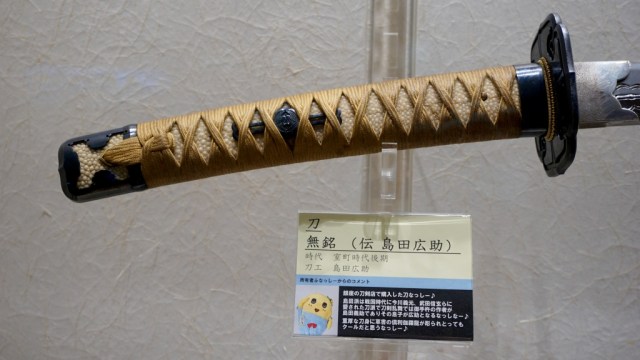
With no inscription to show off on the hilt’s metal, the sword is displayed with its full grip. It’s not only longer than the Muramasa wakizashi, but has a much more dynamic curve. What makes it really dramatic, though, is what’s on the flat of the blade.

That’s an image of the Kurikara, sword of the deity Fudo Myoo (also known as Acala), wrapped in flame with a dragon coiled around it. Aside from the cool-factor of having a sword on your sword, Fudo Myoo is worshipped as a destroyer of evil, and so the image of the Kurikara here is likely meant as a ward against misfortune and dark forces.
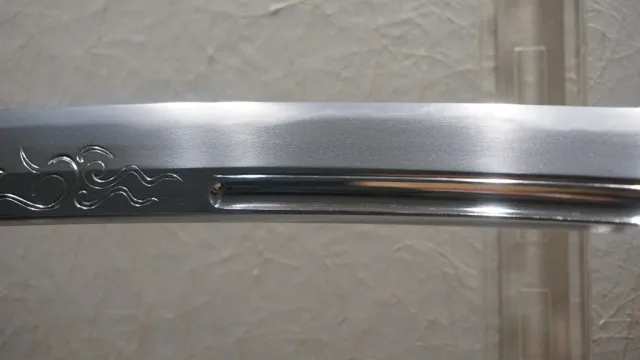
Moving on to the unsigned (but presumably Shimada-made) katana’s hamon, it’s narrower and much less starkly colored than the Muramasa’s, with the ha section having almost a milky whiteness to it.
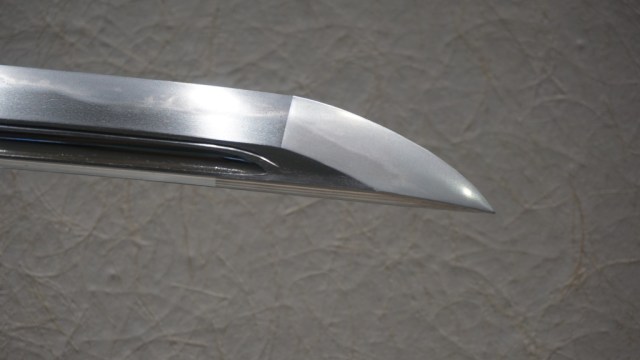
The line itself is also more irregular and undulating, like a choppy wave or spark of lightning.
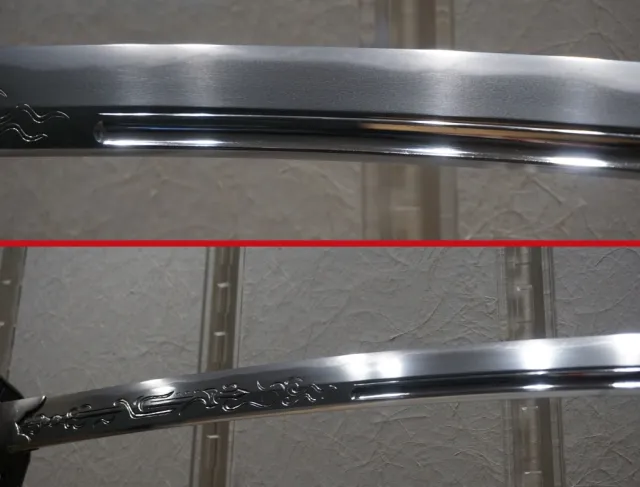
Since the swords are displayed right there in the store, no admission fee or purchase is required to see them, and both the Muramasa and Shimada swords will be on display until November 7.
Related: Touken Ranbu Yorozuyahonpo
Photos ©SoraNews24
● Want to hear about SoraNews24’s latest articles as soon as they’re published? Follow us on Facebook and Twitter!
Credit:




0 comments: